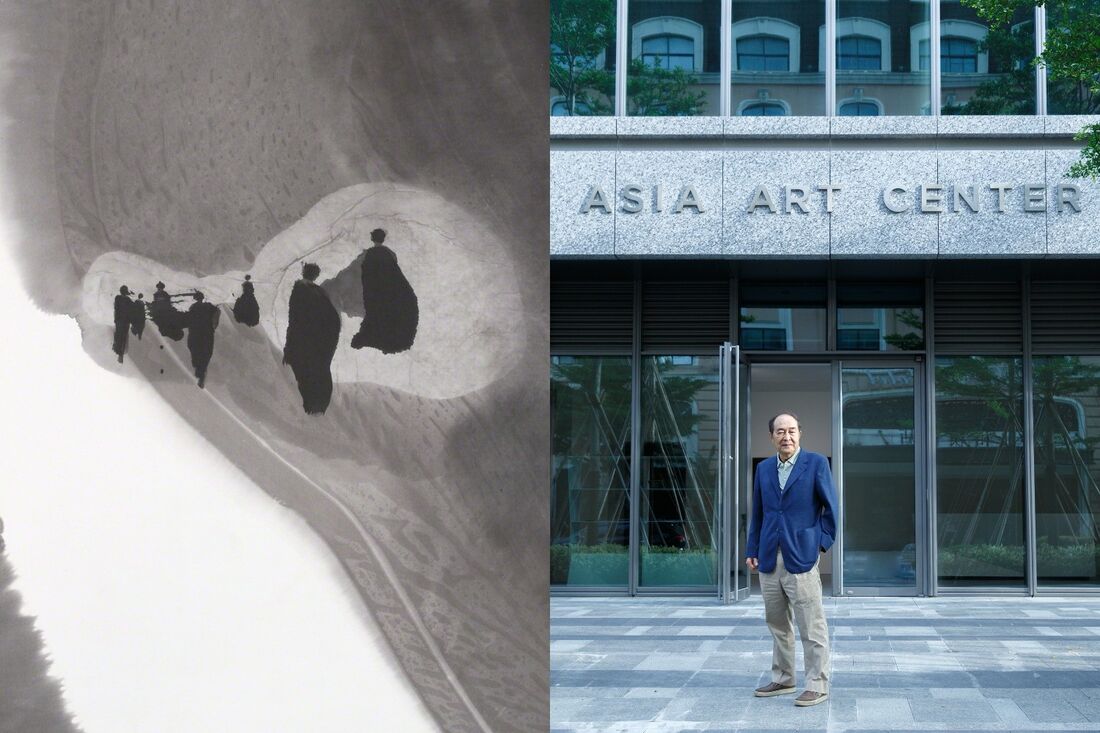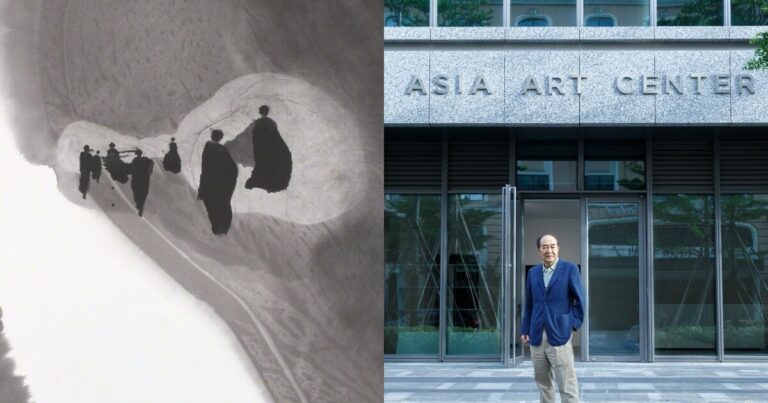
Anchored in the vibrant art scenes of Taipei and Beijing, Asia Art Center is a prime example of how longtime local stalwarts are setting their sights on the international stage. Initially founded by Thomas Lee in 1982, the Taipei-born gallery began with a deep focus on Chinese and Taiwanese art. Now, under the leadership of Lee’s sons Alan and Steven, it expands its reach to include a diverse range of global artistic expressions, demonstrating its dedication to both heritage preservation and contemporary innovation.
Thomas, now 80, studied at the National Taiwan University of the Arts before opening the Asia Art Center in the 1980s. There, his studies played a key role in forming his deep appreciation and keen eye for the arts. Asia Art Center, under the direction of Thomas Lee, later showed works by prominent modern artists such as Yang San-Lang and Hung Jui-Lin in the 1980s. By the late 1990s, the gallery had expanded its roster to include members of the influential Ton Fan Group and the Fifth Moon Art Group, as well as the works of Gao Xingjian 高行健, a painter and Nobel laureate in literature.
Continuing this legacy of commitment, Alan and Steven have propelled Asia Art Center into new international domains. In 2007, Alan ventured to China to open the Asia Art Center’s second gallery space in Beijing’s 798 Art Zone, marking a step towards a wider outreach and gallery expansion effort. Locally, the brothers strengthened their gallery space, moving the Taipei flagship into an 1,800-square-meter (19,000-square-foot) space in the heart of the Taipei Art District. Above all, these changes have helped the co-directors introduce artists from the United States, Europe and other parts of Asia, cultivating a dialogue between their impressive roster of established names and emerging talent from abroad.
“We see ourselves as a bridge connecting Asian and Western cultures,” said Alan. “Our gallery programs in Taipei and Beijing target different clients, but we share the same goal of preserving Asian art and keeping up with the international art scene at the same time.”
Ultimately, according to Wen-Su Lo, project director of Asia Art Center Taipei, bringing emerging artists, such as Carlo D’Anselmi and Katja Farin, to the gallery’s roster has been beneficial for business. In an interview with Artsy, he revealed that his collector base is getting younger. Although painting remains the most desirable medium, collectors seek art from outside the region.
“[The gallery] it started with Taiwanese and Chinese masters, and now we’re working with a lot of younger emerging and mid-career artists, so things have changed a lot over 40 years,” Lo said. “Many of the collectors we work with right now are very younger, in their thirties or forties. Younger collectors are very interested and eager to learn and expand their collections with works by international artists.”
Asia Art Center is also expanding its relationships with artists outside of Asia, introducing its collectors to up-and-coming Western artists. “The Invention of a Graphic Score,” on view through Dec. 24, features a solo exhibition by London-based artist Andrew Pierre Hart. Characterized by trans-modality, Hart’s art reconstructs languages and generates ideas through methods rooted in collective memory and improvisation. Here, her latest work approaches the interplay between painting and sound, paying homage to underrepresented figures in technological advancement, such as Mae C. Jemison, the first black woman to travel into space.
Meanwhile, the gallery has invited several ultra-contemporary artists, most recently announcing the representation of American artist Michelle Blade. These artists represent the evolving narrative of the gallery, marking a shift between its traditional approach as well as a more diverse and global artistic dialogue.
In addition to artists from the Western Hemisphere, the gallery is also focusing on expanding its Japanese art program. Lo shared, “Taiwanese local taste is very Japanese, where many people are very interested [Japanese culture of cuteness] ‘kawaii’”. However, he noted that this is not the typical style of Asia Art Center. Wen added that the influence of the Japanese occupation of Taiwan, which lasted for 50 years from 1895 to 1945, remains culturally significant. Today, Asia Art Center works closely with New York-based Japanese artist Meguru Yamaguchi, whose works have proven to be very popular on an international scale. This collaboration is a representation of how the gallery is breaking the cultural boundaries between Japan, Taiwan and the West.
“As second generation gallerists, my brother and I have been associated with an international lineup of talented artists, introducing their works to our strong client base in Asia as well as placing the works in major collections,” said Steven. “Asia Art Center is proud of our heritage and our wide artistic repertoire.”
Over four decades, Asia Art Center’s dynamic evolution highlights a commitment to Taiwan’s rich art history alongside a quest to expand the art world. As collector interest becomes more international, the gallery remains a beacon of artistic innovation and multi-generational dialogue across Asia.
Disclaimer: Wen-Su Lo has noted the growing popularity of “kawaii” art, but this is not reflected in the gallery’s programming.

